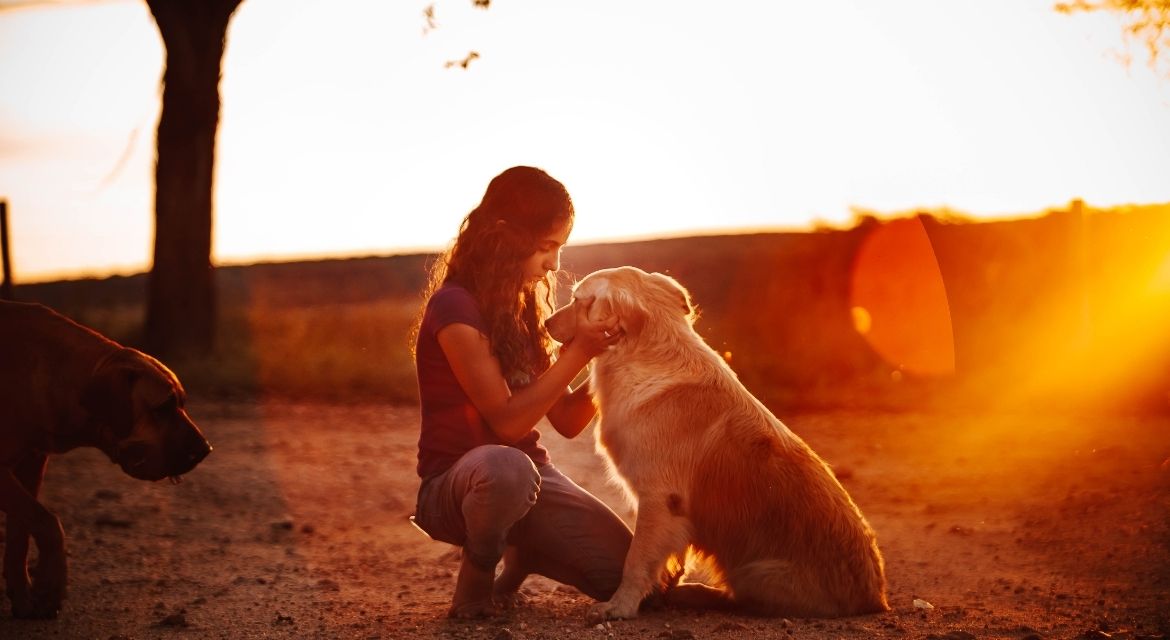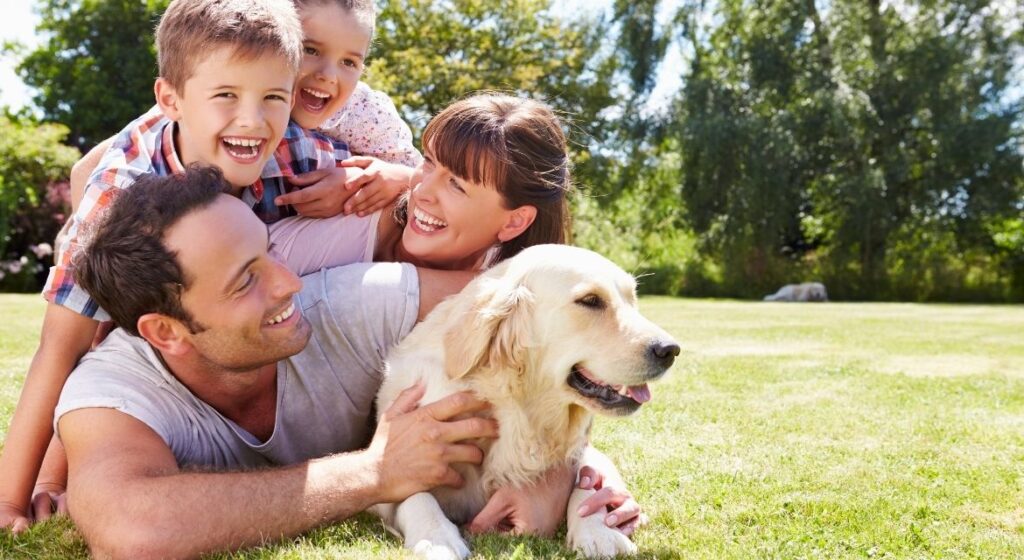 18 May
18 MayComplete Guide to Summer Pet Safety Tips: Protecting Your Furry Friends from Heat-Related Dangers
Table of Contents
As temperatures climb and summer heat intensifies, pet owners across the globe face mounting concerns about keeping their beloved companions safe and comfortable. The scorching summer months bring unique challenges that require careful attention and proactive measures. Understanding comprehensive summer pet safety tips isn’t just about comfort it’s literally a matter of life and death for our furry family members.
Every year, emergency veterinary clinics see a dramatic spike in heat-related pet injuries and illnesses during the warmest months. From minor heat exhaustion to life-threatening heatstroke, the consequences of inadequate summer precautions can be devastating. However, with proper knowledge and preparation, these incidents are entirely preventable.
This comprehensive guide will equip you with essential summer pet safety tips, covering everything from recognizing early warning signs to implementing effective prevention strategies. Whether you’re a first-time pet owner or a seasoned animal lover, these insights will help ensure your pets enjoy the summer season safely and comfortably.
Understanding the Unique Challenges of Summer for Pets
How Pets Experience Heat Differently Than Humans
Unlike humans, dogs and cats have limited ability to regulate their body temperature through sweating. Dogs primarily cool themselves through panting, while cats rely on grooming behaviors and seeking cool surfaces. This fundamental difference makes summer pet safety tips particularly crucial, as our companions cannot adapt to extreme temperatures as efficiently as we do.
The normal body temperature for dogs ranges between 101-102.5°F (38.3-39.2°C), while cats maintain temperatures around 100.5-102.5°F (38-39.2°C). When external temperatures approach or exceed these internal temperatures, pets face significant challenges in maintaining thermal balance.
Factors That Increase Summer Heat Risks
Several factors can amplify heat-related dangers for pets during summer months. Age plays a crucial role both very young and senior pets struggle more with temperature regulation. Puppies and kittens haven’t fully developed their cooling mechanisms, while older animals may have compromised circulatory systems.
Breed characteristics significantly impact heat tolerance. Brachycephalic breeds like English Bulldogs, French Bulldogs, Pugs, Persian cats, and Himalayan cats face particular challenges due to their shortened airways. These breeds require especially vigilant application of summer pet safety tips.
Weight and fitness levels also matter. Overweight pets work harder to cool themselves and are more susceptible to heat-related illnesses. Similarly, pets with underlying health conditions such as heart disease, respiratory issues, or diabetes face elevated risks during hot weather.
Comprehensive Summer Pet Safety Tips for Heat Prevention
Creating an Optimal Indoor Environment
The foundation of effective summer pet safety tips begins with establishing a cool, comfortable indoor sanctuary. Air conditioning provides the most reliable temperature control, but not all pet owners have access to central air systems. In such cases, strategically placed fans can create air circulation that helps with cooling.
Consider investing in cooling mats specifically designed for pets. These products use gel technology or water to provide a consistently cool surface for your pet to rest on. Place these mats in your pet’s favorite resting spots and rotate them regularly to maintain optimal cooling effectiveness.
Window coverings play a vital role in maintaining indoor coolness. Heavy curtains or reflective window films can significantly reduce heat gain from direct sunlight. During peak heat hours, typically between 10 AM and 4 PM, keep curtains drawn to minimize indoor temperature increases.
Hydration Strategies and Water Management
Proper hydration forms a cornerstone of summer pet safety tips. Fresh, clean water should be available at all times, but simply providing water isn’t enough you must encourage consumption and monitor intake levels.
Multiple water stations throughout your home ensure easy access regardless of where your pet chooses to rest. Consider using elevated bowls, which some pets prefer, or wide, shallow dishes that are easier for flat-faced breeds to access comfortably.
Ice cubes can make water more appealing while providing additional cooling benefits. Some pets enjoy playing with ice cubes, turning hydration into an engaging activity. You can also freeze low-sodium broth into ice cube trays for a more enticing frozen treat.
Monitor your pet’s water consumption patterns. A sudden decrease in drinking may indicate the onset of heat-related stress, while excessive drinking could signal dehydration or other health concerns requiring veterinary attention.
Strategic Exercise and Activity Planning
Modifying exercise routines represents one of the most important summer pet safety tips. The timing of physical activities can mean the difference between safe enjoyment and dangerous overheating.
Early morning hours, typically between 6-8 AM, offer the coolest temperatures for outdoor activities. Similarly, evening walks after 7 PM allow for exercise once temperatures begin dropping. Always check pavement temperature with the back of your hand if it’s too hot for your skin, it’s too hot for your pet’s paw pads.
Indoor exercise alternatives become essential during extreme heat. Mental stimulation through puzzle toys, indoor training sessions, and interactive play can help burn energy without exposure to dangerous temperatures. Many pets actually prefer these activities during hot weather.
Consider investing in a kiddie pool for dogs who enjoy water. This provides cooling relief while allowing for physical activity in a controlled environment. Always supervise water play and ensure easy entry and exit from any water source.
Grooming and Coat Management for Summer
Proper grooming serves as a crucial component of summer pet safety tips. Regular brushing removes loose fur that can trap heat against the skin. For double-coated breeds, thorough brushing helps prevent matting while allowing better air circulation through the coat.
However, avoid the temptation to shave your pet completely. The coat actually provides insulation against heat when properly maintained. A closely shaved coat can lead to sunburn and may actually make temperature regulation more difficult.
Professional grooming services can provide breed-specific cuts that maintain coat function while improving cooling efficiency. Many groomers offer summer clips designed to keep pets comfortable while preserving the protective qualities of their natural coat.
Pay special attention to areas where moisture can accumulate, such as between toes, in skin folds, and around facial features. These areas are prone to bacterial growth in hot, humid conditions and require regular cleaning and drying.
Vehicle Safety and Travel Considerations
The Deadly Danger of Hot Cars
Perhaps the most critical of all summer pet safety tips involves never leaving pets unattended in vehicles. Even with windows cracked, car interiors can reach lethal temperatures within minutes. On an 80°F day, car interiors can exceed 100°F in just 10 minutes and continue climbing to potentially fatal levels.
The greenhouse effect created by car windows traps heat efficiently, making vehicles death traps for pets. Even in shade, even with windows partially open, even for “just a few minutes” these conditions remain dangerous. No errand is worth risking your pet’s life.
If you see a pet left alone in a hot car, take immediate action. Check local laws regarding intervention, as many areas now have Good Samaritan laws protecting those who break windows to rescue pets from hot vehicles. Call local authorities immediately and stay with the vehicle until help arrives.
Safe Travel Practices During Summer
When traveling with pets during summer months, implementing proper summer pet safety tips ensures everyone’s comfort and safety. Pre-cool your vehicle before loading pets, and maintain air conditioning throughout the journey.
Plan frequent stops every 1-2 hours to allow pets to hydrate, relieve themselves, and cool down. Research pet-friendly rest stops along your route that offer shaded areas and water access. Many highway rest areas now include designated pet relief areas with water features.
Never allow pets to ride in truck beds or trailers without proper ventilation and temperature control. These areas can become dangerously hot and offer no protection from direct sunlight.
Consider travel timing carefully. Overnight or early morning travel often provides cooler conditions and less stressful experiences for pets. If flying with pets, research airline policies regarding temperature restrictions many carriers suspend pet transport during extreme heat periods.

Recognizing and Responding to Heat-Related Emergencies
Early Warning Signs of Heat Stress
Understanding the progressive symptoms of heat-related illness forms an essential part of summer pet safety tips. Early intervention can prevent minor heat stress from escalating into life-threatening heatstroke.
Initial signs include increased panting, drooling, and restlessness. Pets may seek cool surfaces, appear lethargic, or show decreased appetite. As conditions worsen, symptoms progress to excessive drooling, difficulty breathing, weakness, and loss of coordination.
Advanced heatstroke symptoms include vomiting, diarrhea, collapse, and altered mental states. The gums and tongue may appear bright red or pale, and the pet may seem confused or unresponsive. At this stage, immediate veterinary intervention becomes critical for survival.
Immediate Response Protocols
When heat stress symptoms appear, quick action implementing summer pet safety tips can save lives. Move your pet immediately to a cool, shaded area or air-conditioned space. Begin cooling procedures gradually sudden temperature changes can cause shock.
Apply cool (not cold) water to the paw pads, belly, and inner thighs. These areas have blood vessels close to the surface, making cooling more effective. Use fans to enhance evaporation and heat dissipation. Avoid ice or extremely cold water, which can cause blood vessels to constrict and actually impede cooling.
Offer small amounts of cool water if your pet is conscious and alert, but don’t force drinking. Pets in advanced heat stress may have difficulty swallowing safely.
Monitor your pet’s temperature if possible normal cooling should bring temperatures down gradually. However, even if symptoms improve, veterinary examination remains essential to check for internal complications.
Professional Veterinary Care
Never hesitate to contact emergency veterinary services when dealing with suspected heat-related illness. Even if your pet appears to recover with home treatment, internal complications such as organ damage can develop hours later.
Veterinarians can provide advanced cooling techniques, IV fluid therapy, and monitoring for secondary complications. They’ll assess organ function and provide supportive care to prevent long-term health consequences.
Follow-up care often involves monitoring for delayed complications and adjusting summer pet safety tips based on your pet’s specific vulnerabilities. Some pets who experience heatstroke become more susceptible to future heat-related problems.
Breed-Specific Summer Pet Safety Tips
Special Considerations for Brachycephalic Breeds
Flat-faced breeds require extra vigilance when implementing summer pet safety tips. Their shortened airways make panting less efficient, significantly increasing their risk of overheating. These breeds should spend most hot days indoors in air-conditioned environments.
Exercise should be extremely limited during warm weather short, gentle indoor activities may be more appropriate than any outdoor exercise. Even normal activities like eating can be stressful for these breeds in hot weather, so consider elevating food bowls and providing frequent small meals.
Swimming can be particularly dangerous for brachycephalic breeds, as they’re already working harder to breathe. If water activities are desired, consider very shallow wading with constant supervision.
Long-Haired and Double-Coated Breeds
Breeds with heavy coats need specific summer pet safety tips to manage their natural insulation effectively. Regular professional grooming helps maintain coat health while reducing heat retention. However, these breeds should never be shaved completely, as their coats also protect against sunburn.
Create multiple cool resting areas throughout your home, as these pets will actively seek the coolest spots available. Cooling mats and elevated beds that allow air circulation underneath can provide significant relief.
Monitor these breeds extra carefully during any outdoor time, as their temperature can rise rapidly despite appearing comfortable initially.
Senior Pets and Those with Health Conditions
Older pets and those with chronic health conditions require customized summer pet safety tips. These animals often have compromised temperature regulation abilities and may be taking medications that affect their heat tolerance.
Work closely with your veterinarian to adjust summer care routines based on your pet’s specific health needs. Some medications may need dosage adjustments during extreme heat, while others may require increased monitoring for side effects.
Consider more frequent veterinary check-ups during summer months to monitor how well senior or chronically ill pets are tolerating the heat.
Environmental Modifications for Summer Safety
Outdoor Space Management
If your pets spend time outdoors, implementing proper summer pet safety tips involves significant environmental modifications. Provide multiple shaded areas throughout your yard, including both natural shade from trees and artificial shade from tarps or pet-specific shade structures.
Remove or modify surfaces that retain heat excessively. Dark pavement, metal surfaces, and some types of artificial turf can reach temperatures capable of burning pet paw pads within seconds.
Consider installing misting systems or sprinklers that pets can access voluntarily. Many dogs enjoy these cooling methods, though cats typically prefer other cooling strategies.
Ensure outdoor water sources remain fresh and cool. Consider automatic water dispensers or frequently refreshed water bowls in multiple locations.
Landscaping for Pet Safety
Strategic landscaping can significantly improve outdoor comfort for pets during summer. Plant shade trees and large shrubs to create naturally cool microclimates. Choose pet-safe plants that also provide cooling benefits through transpiration.
Create pathways using materials that don’t retain heat excessively. Light-colored pavers, wood chips, or specially designed pet-safe surfaces can make outdoor movement safer during hot weather.
Remove or fence off any plants that become toxic when wilted or stressed by heat. Summer stress can make some normally safe plants dangerous for pets.
Nutrition and Diet Adjustments for Summer
Feeding Strategies During Hot Weather
Summer pet safety tips must include dietary considerations, as pets’ nutritional needs and eating patterns often change during hot weather. Many pets naturally eat less during extreme heat, which is normal provided they maintain adequate hydration.
Consider offering smaller, more frequent meals rather than large portions. This reduces the metabolic heat generated by digestion and makes mealtime more comfortable for your pet.
Wet food can contribute to hydration while providing necessary nutrition. If your pet typically eats dry food, consider adding water or low-sodium broth to increase moisture content.
Be cautious with treats, especially during outdoor activities. Rich, high-fat treats can increase metabolic heat production and may cause digestive upset in hot weather.
Food Safety and Storage
Hot weather accelerates food spoilage, making proper storage crucial for pet health. Never leave wet food out for extended periods bacteria multiply rapidly in warm temperatures.
Store dry food in cool, dry locations in sealed containers to prevent pest infestations and maintain freshness. Check expiration dates more frequently during summer, as heat can accelerate nutritional degradation.
Be extra cautious about food and water bowls left outdoors. These can become breeding grounds for bacteria and may attract insects that could harm your pet.
Creating an Emergency Action Plan
Preparation and Supplies
Effective summer pet safety tips include being prepared for heat-related emergencies. Create a dedicated emergency kit containing cooling supplies, emergency contact information, and first aid materials.
Essential items include cooling mats, battery-operated fans, instant cold compresses (properly used), thermometer, and emergency veterinary contact information. Keep this kit easily accessible and ensure all family members know its location.
Research emergency veterinary clinics in your area, including their hours and policies. Program important numbers into your phone and post them in visible locations around your home.
Communication and Coordination
Develop a family emergency plan that includes protocols for different heat-related scenarios. Ensure all family members understand the signs of heat stress and know how to respond appropriately.
If multiple people care for your pet, create clear communication channels about your pet’s condition, activities, and any concerning symptoms.
Consider establishing a network with neighbors who can help monitor your pets during extreme heat events, especially if you must be away during dangerous temperature periods.
Long-Term Health Implications and Prevention
Building Heat Tolerance Gradually
While summer pet safety tips focus on immediate protection, gradually building your pet’s heat tolerance during cooler months can improve their summer resilience. This involves slowly increasing activity levels and outdoor exposure during mild weather.
Never attempt to force heat adaptation during already dangerous conditions. This gradual conditioning should occur during spring months or cooler summer periods under careful supervision.
Work with your veterinarian to develop an appropriate conditioning program based on your pet’s age, health status, and breed characteristics.
Annual Health Assessments
Regular veterinary check-ups become even more important for pets who have experienced heat-related stress. Annual assessments should include evaluation of heat tolerance and any changes in health status that might affect summer safety.
Discuss any concerns about your pet’s heat tolerance with your veterinarian before summer arrives. This proactive approach allows for adjustments to summer pet safety tips based on your pet’s current health status.
Consider baseline health testing for senior pets or those with chronic conditions to better monitor how summer heat affects their overall health.
Conclusion: Ensuring Safe and Enjoyable Summers for Your Pets
Implementing comprehensive summer pet safety tips requires dedication, planning, and constant vigilance, but the effort invested in protecting our beloved companions pays immeasurable dividends in their health and happiness. The summer months don’t have to be a source of stress or danger with proper preparation and knowledge, they can be a time of safe enjoyment for pets and their families.
Remember that every pet is unique, and summer pet safety tips should be tailored to your individual companion’s needs, health status, and circumstances. What works for one pet may not be appropriate for another, making observation and adaptability key components of effective summer care.
The consequences of heat-related illness can be severe and sometimes irreversible, but they are entirely preventable with proper precautions. By staying informed, prepared, and attentive to your pet’s needs, you can ensure that summer remains a season of fun, exploration, and bonding rather than worry and emergency veterinary visits.
As temperatures continue to rise globally, the importance of understanding and implementing summer pet safety tips will only increase. Make this summer the safest yet for your furry family members by taking proactive steps now. Your pets depend on you for their safety and well-being with the knowledge and tools provided in this guide, you’re well-equipped to meet that responsibility successfully.
Stay cool, stay safe, and enjoy the summer season with confidence, knowing that you’ve taken every possible precaution to protect your beloved pets from heat-related dangers. Their health and happiness are worth every effort you invest in proper summer safety measures.
You May Also Like :
How to Stop Dog Barking: The Complete Guide to a Quieter, Happier Pet
Comprehensive Guide to Interactive Cat Toys: Keeping Indoor Cats Happy and Healthy
Dog Grooming at Home: The Complete Guide for Dog Owners
10 Essential Dog Training Tips Every New Puppy Owner Should Know
How to Take Care of a Pet: Essential Guide to Responsible Pet Ownership
The Ultimate Guide to Cat Playtime: Why Play Is Essential for Your Feline’s Health and Happiness
How to Successfully Work from Home with Pets: A Comprehensive Guide
The Mental Health Benefits of Having a Dog: What Every Pet Owner Should Know
How to Groom a Puppy for the First Time: Step-by-Step Guide
Quick Solutions for Daily Pet Care: Simple Strategies for a Happier Pet and Easier Routine




